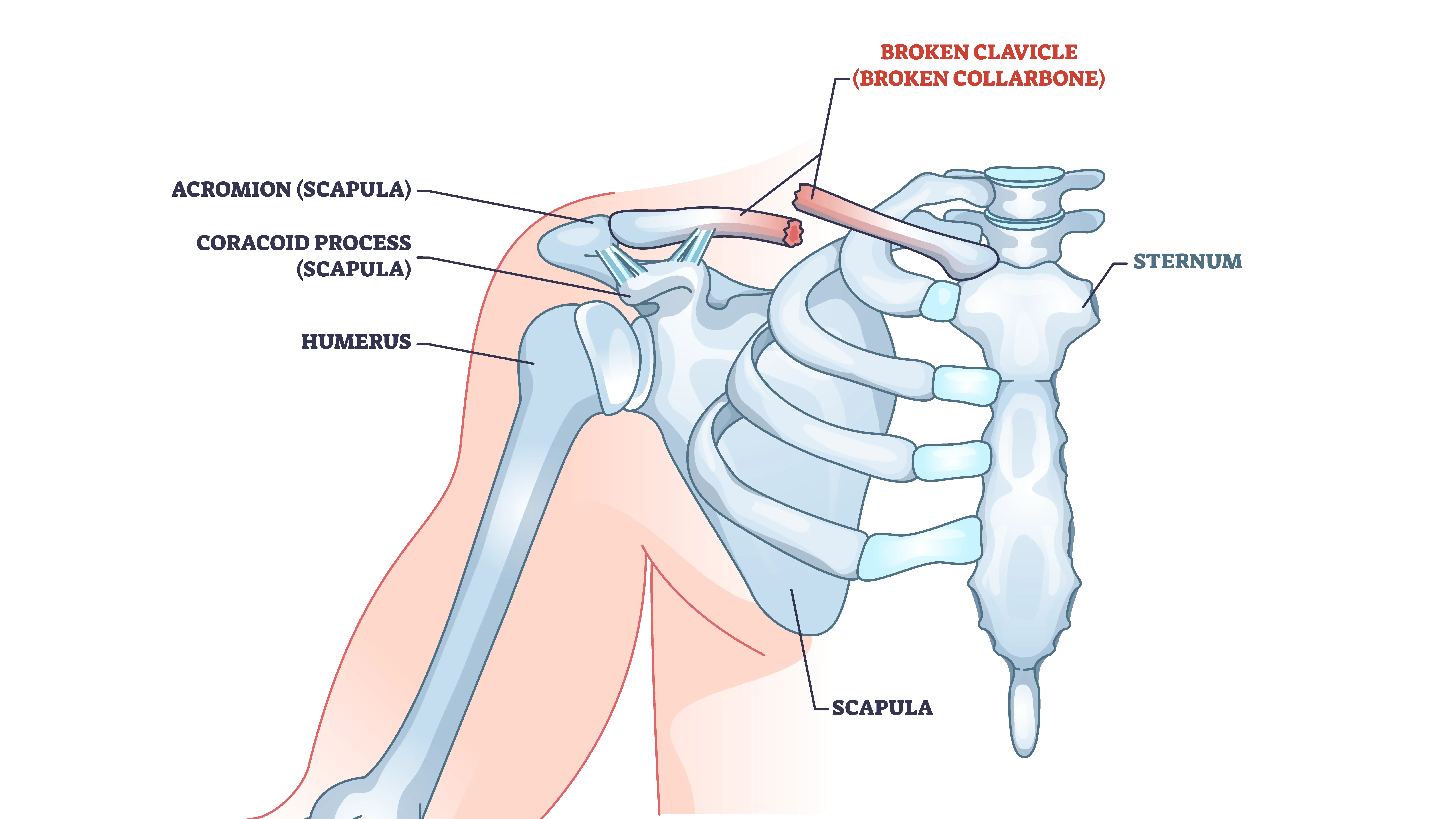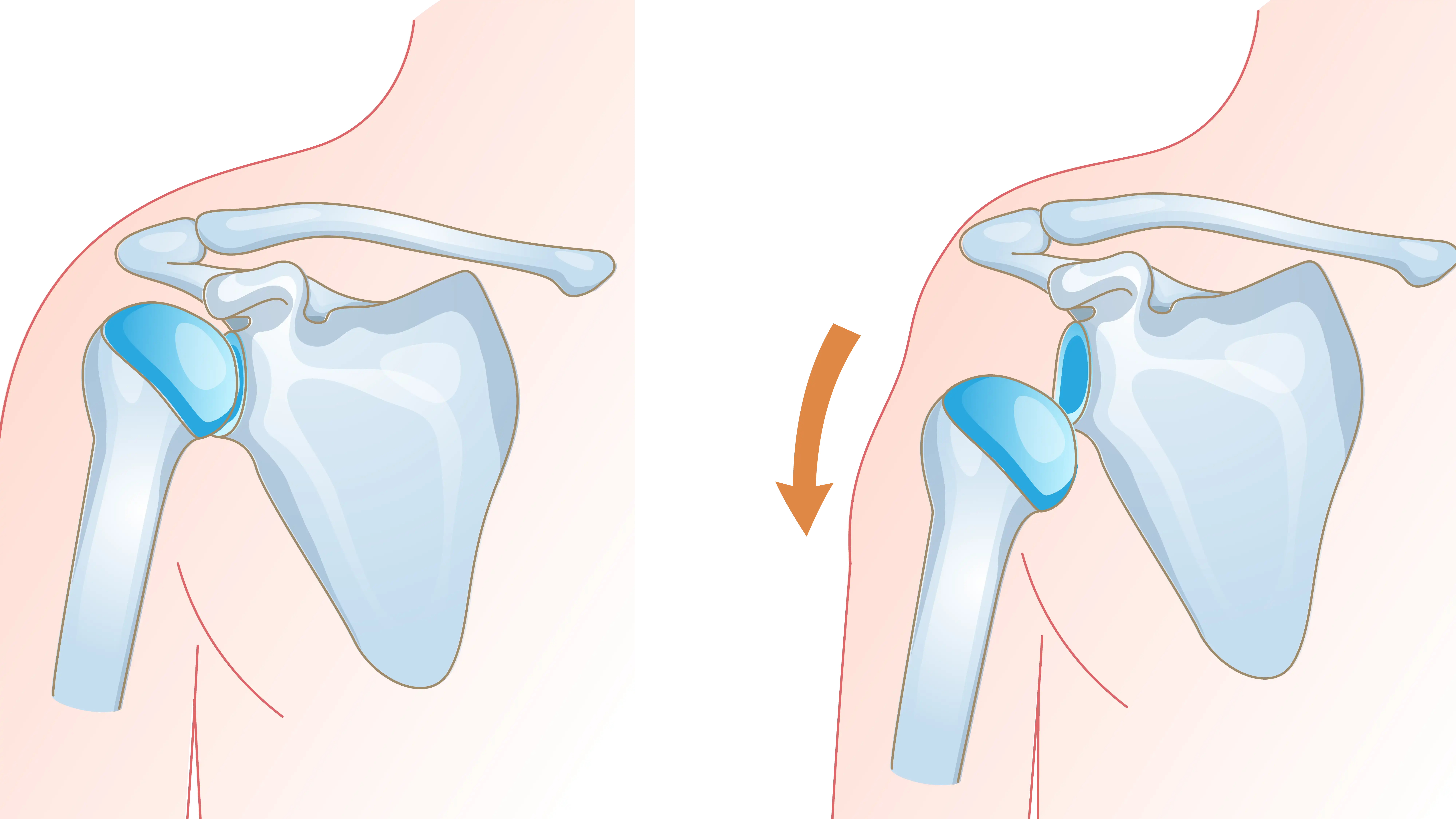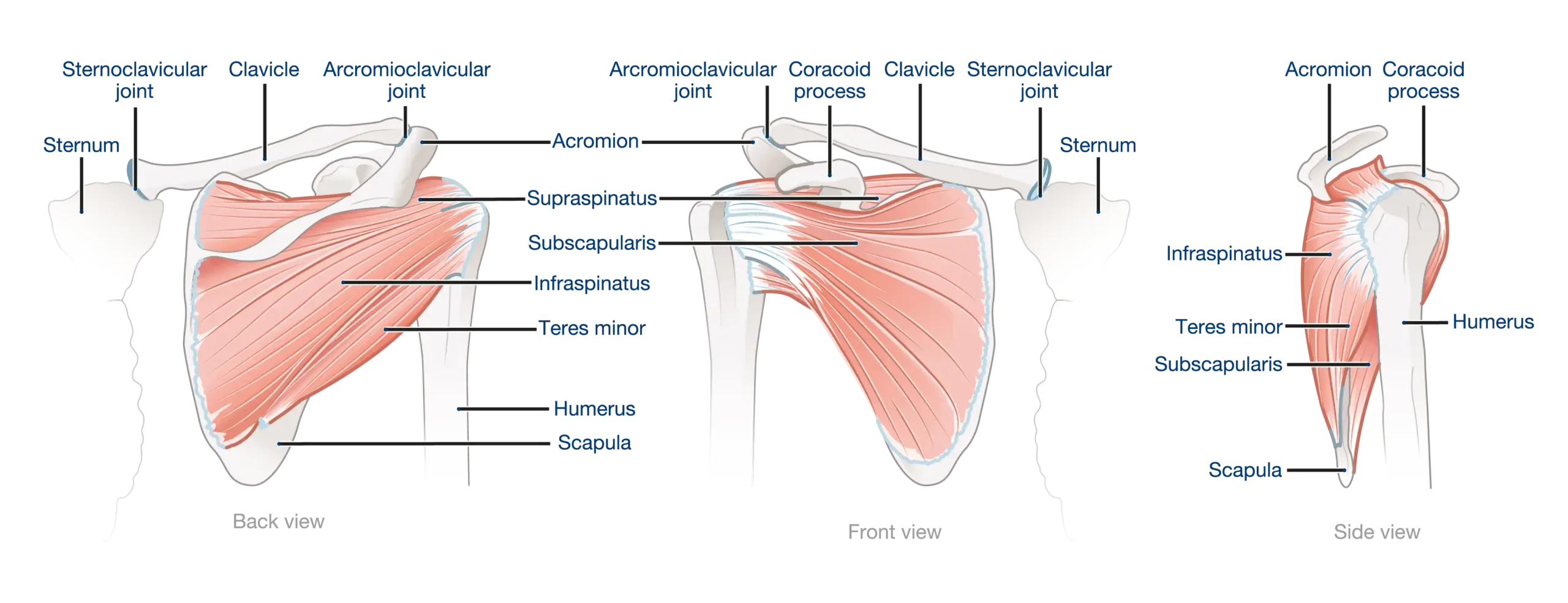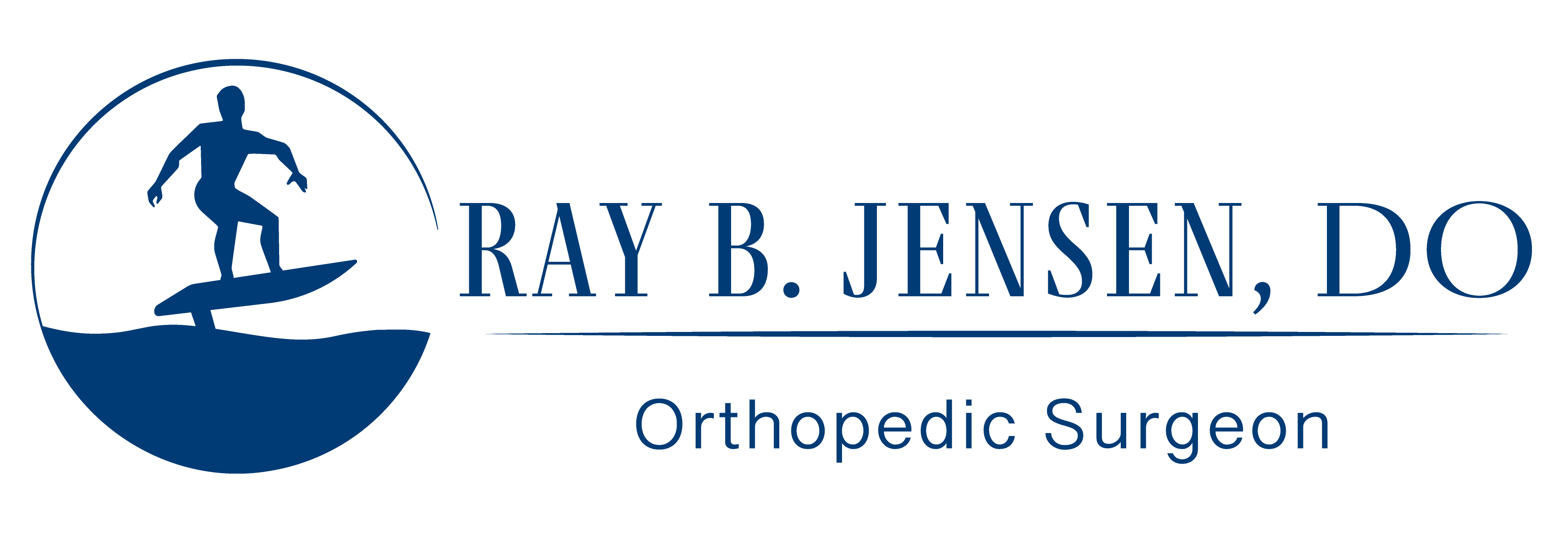Falling can lead to various shoulder injuries, such as clavicle fractures, dislocations, and rotator cuff tears. In this post, we’ll cover these injuries, common symptoms, and how you can prevent them.
Key Takeaways
- Common shoulder injuries from falls include clavicle fractures, shoulder dislocations, and rotator cuff tears, often resulting in pain and mobility issues.
- The R.I.C.E. method (Rest, Ice, Compression, Elevation) is often used to minimize damage and improve comfort immediately after a shoulder injury. Surgery may be recommended for some injuries.
- Preventative measures such as maintaining good lighting, using handrails, and engaging in regular physical activity can reduce the risk of falls and subsequent shoulder injuries.
Understanding the Mechanics of Shoulder Injuries from Falls
The shoulder joint often bears the impact from falls, leading to injuries such as clavicle fractures, dislocations, and rotator cuff tears. The amount of force and the direction of the fall play a role in the type and severity of the injury.
Because the shoulder is the most mobile joint in the body, but also one of the least stable, it’s particularly vulnerable during sudden impacts. Injuries frequently occur when the arm is extended to break a fall or when direct force is applied to the shoulder.
By understanding the mechanics behind these injuries, individuals can better anticipate risk and form prevention strategies to support long-term shoulder health.
Identifying Common Shoulder Injuries from Falls
Shoulder injuries from falls can range from minor to severe. Common injuries include clavicle fractures, shoulder dislocations, and rotator cuff tears. These injuries often occur when someone falls directly onto their shoulder or attempts to catch themselves with an outstretched hand.
Symptoms can include severe shoulder pain, difficulty moving the arm, shoulder instability, and visible changes in the shoulder joint. In the next sections, we’ll cover some of the most common shoulder injuries from falls in more detail.
Clavicle Fractures: The Broken Collarbone
A clavicle fracture, also known as a broken collarbone, may result from a direct blow to the shoulder during a fall or from severe impact. Typical symptoms include pain at the fracture site and difficulty moving the affected arm and shoulder. Some patients also experience swelling, bruising, and tenderness.

Diagnosis generally involves a physical examination and confirmation via X-ray. Treatment typically includes immobilization with a sling, activity modification, and physical therapy. In more severe cases, surgery may be required to properly align the bone for healing.
Recovery usually takes six to eight weeks, depending on the injury’s severity and treatment approach. Proper treatment and a guided rehabilitation plan are important to avoid long-term complications and restore function.
Dislocated Shoulder: When the Shoulder Joint Pops Out
A dislocated shoulder occurs when the upper arm bone pops out of the shoulder socket, often due to significant force, like falling onto an outstretched arm. Symptoms include intense pain, swelling, and a visible deformity in the shoulder.

A shoulder specialist can perform a closed reduction and reposition the humerus back into the socket. Initial treatment usually involves rest, ice application, and immobilization. Surgical repair may be required if the shoulder becomes unstable or if there is significant soft tissue damage.
After a first dislocation, the risk of recurrence may increase. Physical therapy and lifestyle adjustments aimed at strengthening and stabilizing the joint are key to preventing future injuries.
Rotator Cuff Tears: Damage to the Shoulder Tendons
Rotator cuff tears involve damage to the group of tendons and muscles that help stabilize and move the shoulder. These injuries are especially common among older adults, as well as athletes in overhead sports such as baseball. Symptoms often include persistent pain, arm weakness, and difficulty raising the arm overhead.

For some rotator cuff injuries, initial care may involve the R.I.C.E. protocol (Rest, Ice, Compression, Elevation), along with physical therapy. Severe cases may require surgery to repair torn tendons in soft tissues. Without treatment, small tears can enlarge in some cases, leading to complications.
Prompt diagnosis and a comprehensive rehabilitation plan can aid in restoring shoulder strength and preventing long-term damage.
Immediate Steps After a Shoulder Injury
If a shoulder injury occurs, immediate care can help limit damage and support recovery. Depending on the extent of the injury, plan to immobilize the injured shoulder using a sling to prevent further injury and reduce pain.
Using the R.I.C.E. method (Rest, Ice, Compression, Elevation) can reduce swelling and alleviate pain. Here’s how to apply it:
- Rest the injured area.
- Ice the shoulder to reduce inflammation.
- Compression helps control swelling.
- Elevation assists in decreasing swelling.
Consider seeking medical evaluation if you experience significant pain, restricted movement, or visible changes in the shoulder’s appearance. Appropriate action can improve long-term outcomes and reduce the chance of complications.
Long-Term Recovery and Rehabilitation
Recovery may take weeks to months, depending on the severity of the injury, and often involves a guided rehabilitation plan. This plan typically includes pain management, mobility restoration, and gradual strengthening of shoulder muscles.
Physical therapy is essential in shoulder injury rehabilitation, using targeted exercises and manual techniques to improve flexibility and strength. Regular monitoring and adjustments ensure continued improvement and prevent setbacks.
Incorporating stretching exercises and strengthening exercises into your daily routine aids in shoulder function recovery. Consistent effort and dedication to rehabilitation can support full recovery and future injury prevention.
Surgical Options for Severe Shoulder Injuries
For severe shoulder injuries and injuries that do not improve with conservative treatment, surgery may be recommended.
Arthroscopic surgery, a minimally invasive option, involves the insertion of a tiny camera and repairing damage through small incisions. More complex cases may call for other procedures, including open tendon repair, shoulder replacement, or reverse shoulder replacement.
An experienced orthopedic surgeon can evaluate your specific injury and guide the best treatment and recovery path.
Preventing Shoulder Injuries from Falls
Preventing shoulder injuries from falls involves proactive measures to reduce falling risk and protect the shoulder joint. Key strategies include:
- Ensuring rooms and hallways are well-lit
- Using handrails on stairs
- Regular physical activity to improve strength and balance
- Wearing shoes with proper traction to avoid slipping
Integrating these steps into your routine supports shoulder health and reduces your risk of fall-related injuries.
Summary
Understanding common shoulder injuries from falls and how to prevent and treat them is important for maintaining shoulder health. Clavicle fractures, dislocated shoulders, and rotator cuff tears are frequent injuries that require timely and appropriate treatment to avoid long-term complications. By recognizing the signs of these injuries and knowing the immediate steps to take, you can ensure a smoother recovery process.
Preventive measures, such as regular physical activity, proper footwear, and environmental adjustments, can significantly reduce the risk of shoulder injuries. Taking proactive steps to protect your shoulders can help you stay active and enjoy a higher quality of life. Remember, a well-informed approach to shoulder health can make all the difference!
Frequently Asked Questions
What are the most common shoulder injuries from falls?
The most common shoulder injuries resulting from falls are clavicle fractures, dislocated shoulders, and rotator cuff tears. These injuries can negatively impact mobility and often require proper medical evaluation and treatment.
What should I do immediately after a shoulder injury?
Immediately after a shoulder injury, apply the relevant steps in the R.I.C.E. method (Rest, Ice, Compression, Elevation) and consider seeking medical attention if you experience significant pain or difficulty moving the shoulder.
How long does it take to recover from a clavicle fracture?
Recovery from a clavicle fracture generally takes six to eight weeks, influenced by the injury’s severity and your overall health. It’s important to follow your doctor’s advice during this period for optimal healing.
When is surgery necessary for shoulder injuries?
Surgery may become necessary for severe shoulder injuries that fail to improve with conservative treatments. Evaluation by a shoulder specialist can help determine the need for surgical intervention.
How can I prevent shoulder injuries from falls?
To prevent shoulder injuries from falls, ensure adequate lighting and use handrails on staircases, while also engaging in regular physical activity and wearing appropriate footwear. Taking these precautions can reduce your risk of injury.



